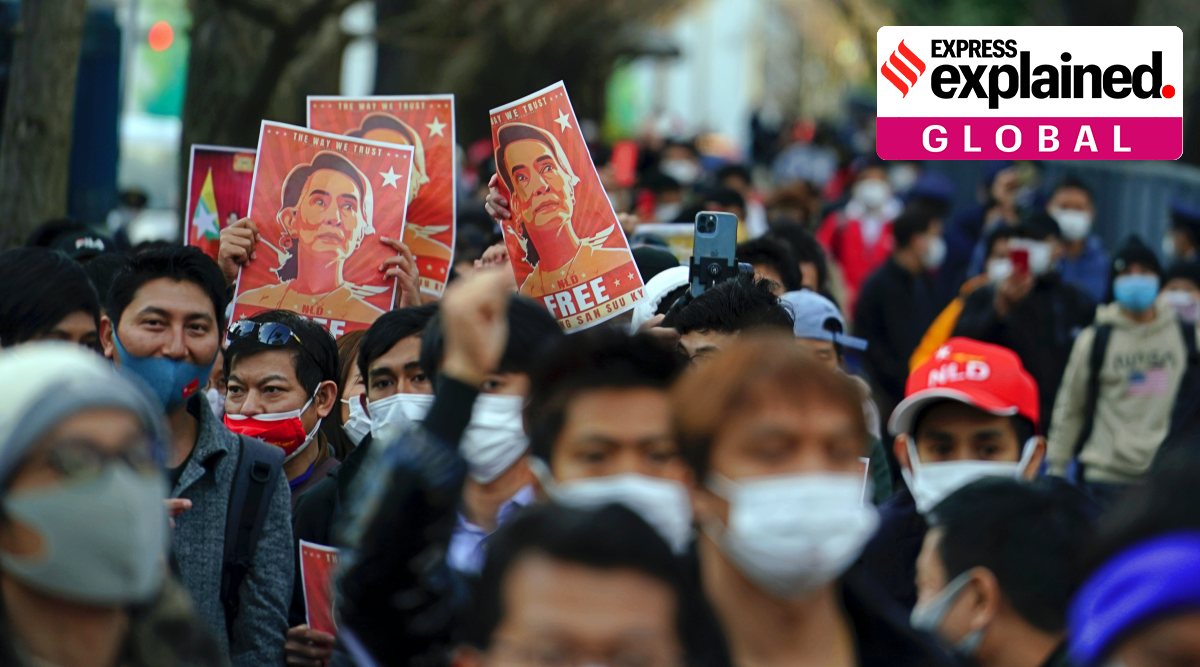For many decades, many governments around the world ignored the name changes, and continued to call the country Burma and its capital Rangoon.

Myanmar's military has taken control of the country under a one-year state of emergency and reports say State Counsellor Aung San Suu Kyi and other government leaders have been detained. (AP)
The Myanmar military grabbed power in a coup on Monday (February 1) – the third time in the nation’s history since its independence from British rule in 1948.
After the last such takeover in 1988, the armed forces went on to make a decision that would remain controversial for decades: changing the country’s name.
How Burma became Myanmar
When British imperialists annexed what is today’s Myanmar during the 19th century, they called it Burma after the dominant Burman (Bamar) ethnic group, and administered it as a province of colonial India. This arrangement continued until 1937, when Burma was separated from British India and made a separate colony.
Even after the country became independent in 1948, it retained the same name, becoming the ‘Union of Burma’. In 1962, the military took over from a civilian government for the first time, and amended the official name in 1974 to the ‘Socialist Republic of the Union of Burma’.
Then in 1988, Myanmar’s armed forces again took power in the country, after suppressing a popular uprising that led to the deaths of thousands, and reversed the official name to ‘Union of Burma’. But a year later, the junta adopted a law that replaced Burma with Myanmar, making the country the ‘Union of Myanmar’.
A number of other places in the country also saw their names changed, including the then-capital city, which went from Rangoon to Yangon (since 2005, the capital is Naypyidaw, 370 km away to the north).
Why the name change was controversial
While changing the country’s name, the military said that it was looking for a way to leave behind a name inherited from the colonial past, and adopt a new one which could unify all of its 135 officially recognised ethnic groups, and not just the Burman people.
Critics decried the move, arguing that Myanmar and Burma mean the same thing in the Burmese language, only that the ‘Myanmar’ is a more formal way of saying ‘Burma’– a word used colloquially. The other name changes too, such as Rangoon to Yangon, only reflected greater conformity with the Burmese language, and nothing else. Also, the name changes took place only in English. Even in English, the adjective form remained (and continues to remain) Burmese, and not Myanmarese.
Pro-democracy sympathisers said that the name changes were illegitimate, as they were not decided by the will of the people. As a result, many governments around the world opposed to the junta decided to ignore the name changes, and continued to call the country Burma and its capital Rangoon.
So, when did ‘Myanmar’ start becoming acceptable?
In the 2010s, the military regime decided to transition the country towards democracy. Although the armed forces remained powerful, political opponents were freed and elections were allowed to be held.
NewDelhi, 4 February:
In 2015, currently detained leader Aung San Suu Kyi’s National League for Democracy party won a majority of seats in the national parliament, a feat it repeated in 2020.
As the Myanmar-vs-Burma debate became less polarising, most foreign governments and international organisations decided to recognise Myanmar as the official name. Many governments, such as Australia’s, decided to use both Burma and Myanmar, as means of signalling support for the democratic transition within the country and following diplomatic protocol at the same time.
Suu Kyi, who became the country’s civilian leader in 2016, also expressed support for using either Myanmar or Burma.
Not all countries followed suit, however. The US remains among the few countries to not recognise the current legal name. This was highlighted after the latest coup took place on Monday, when President Joe Biden said in a statement, “The United States removed sanctions on Burma over the past decade based on progress toward democracy. The reversal of that progress will necessitate an immediate review of our sanction laws.”